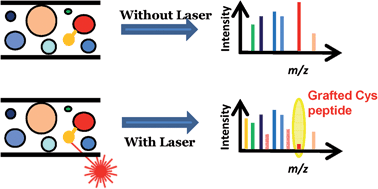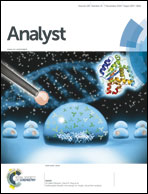Implementing visible 473 nm photodissociation in a Q-Exactive mass spectrometer: towards specific detection of cysteine-containing peptides†
Abstract
Improvement of the fragmentation specificity may streamline data processing of bottom-up proteomic experiments by drastically reducing either the amount of MS/MS data to process in the discovery phase or the detection of interfering signals in targeted quantification. Photodissociation at appropriate wavelengths is a promising alternative technique to the non-discriminating conventional activation mode by collision. Here, we describe the implementation of visible LID at 473 nm in a Q-Exactive-Orbitrap mass spectrometer for the specific detection of cysteine-containing peptides tagged with a Dabcyl group. HCD cell DC offset and irradiation time were optimized to obtain high fragmentation yield and spectra free of contaminating CID product ions, while keeping the irradiation time scale compatible with chromatographic separation. With this optimized experimental set-up, the selective detection of cysteine-containing peptides in a whole tryptic hydrolysate of three combined proteins is demonstrated by comparing all ion fragmentation (AIF) spectra recorded online with and without laser irradiation.


 Please wait while we load your content...
Please wait while we load your content...